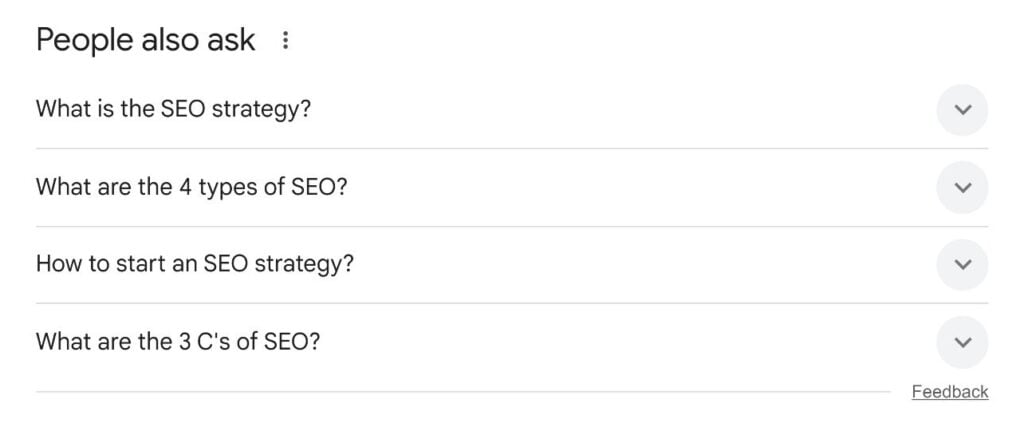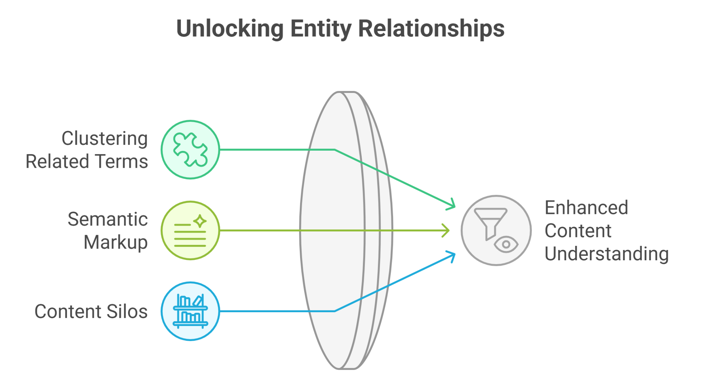As search habits evolve, Answer Engine Optimization (AEO) has become a crucial strategy for digital marketers. Unlike traditional SEO that focuses on ranking for keywords, AEO centers on positioning your content as the definitive answer to specific questions. With voice search becoming more prevalent and AI assistants handling more queries, optimizing for questions isn’t just smart – it’s essential for visibility in 2025 and beyond.
Today’s searchers don’t just want pages that mention their keywords – they want direct answers to their questions. And search engines are becoming increasingly sophisticated in determining which content truly answers user queries most effectively. Let’s explore the best practices that will help you master AEO question optimization and stay ahead of the curve.
Optimize for Featured Snippets and Rich Results
Featured snippets and rich results are prime real estate in search results, often appearing above traditional rankings. These enhanced results are particularly important for AEO because they’re frequently used to answer questions directly in search results or through voice assistants.
Use question-and-answer pairs with FAQ schema
FAQ schema markup is perhaps the most powerful tool in your AEO arsenal. This structured data format explicitly tells search engines that your content contains questions and answers.
The future of SEO isn’t about ranking for keywords; it’s about becoming the definitive answer to user questions.
– John Mueller
- Format your content as direct questions followed by clear, concise answers
- Implement FAQ schema to mark up these Q&A pairs properly
- Batch related questions together to create comprehensive answer sections
By structuring your content this way, you’re essentially handing search engines a ready-made featured snippet. Plus, FAQ schema can help your content appear in the dedicated FAQ rich results, potentially doubling your SERP presence.
Mark up key content using structured data SEO
Beyond FAQ schema, there are numerous structured data types that can enhance your AEO efforts:
- HowTo markup for step-by-step instructions
- Recipe schema for food-related content
- Product schema for e-commerce items
- Event markup for time-based information
Each of these structured data types allows search engines to better understand your content’s context, making it more likely to be served as an answer to relevant questions. Remember that structured data isn’t just about markup – it’s about organizing your content logically to match how people ask questions.
Embed data context with paragraph and list formats
The format of your answers matters tremendously for featured snippet optimization. Search engines have clear preferences for different question types:
- Definition questions (“What is…”) typically pull paragraph featured snippets
- Process questions (“How to…”) often generate ordered list snippets
- Comparison questions (“What’s the difference between…”) may trigger table snippets
Match your content format to the expected answer format. For definition-type questions, create clear, concise paragraphs of 40-60 words that directly answer the question. For process questions, use numbered lists with clear steps. This formatting alignment dramatically increases your chances of featured snippet selection.
Refine Content with Conversational SEO Techniques
AEO success requires thinking beyond traditional keyword optimization to understand the conversational nature of modern search.
Write around query intent, not just keywords

The days of keyword stuffing are long gone. Today’s content needs to address the underlying intent behind queries:
- Identify question clusters around your topic
- Map the user journey from basic questions to complex ones
- Address pain points that motivate the search in the first place
For example, someone asking “how to optimize for voice search” isn’t just looking for a basic definition – they want actionable steps, examples, and context. Your content should satisfy this complete intent, not just target the keyword phrase.
Frame responses for how people use voice search
Voice queries differ substantially from typed searches. They tend to be:
- Longer (7-9 words vs. 1-3 for typed searches)
- More conversational and question-based
- Often containing filler words like “can you tell me” or “I want to know”
To optimize for voice search, write answers that match natural speech patterns. Use complete sentences and a conversational tone. Remember that voice search results are typically pulled from content that directly and succinctly answers questions without requiring users to read through irrelevant information first.
Target follow-up questions in a dialogue format
Modern search engines don’t just handle isolated questions – they maintain context through conversation. Think about how one question naturally leads to another:
- “What is AEO?” might lead to “How is AEO different from SEO?”
- “How do I implement FAQ schema?” might lead to “What tools can help with schema markup?”
Structure your content to anticipate and answer these follow-up questions. This creates a more comprehensive resource that keeps users on your page longer and signals to search engines that your content thoroughly addresses the topic.
Use Natural Language Processing Insights
Understanding how machines process language can give you a significant edge in AEO optimization.
Group related entities using NLP analysis

Search engines use entity-based indexing to understand relationships between concepts. You can leverage this by:
- Clustering related terms and concepts within your content
- Using semantic markup to highlight entity relationships
- Creating content silos around topic entities
For example, if you’re writing about “structured data SEO,” include related entities like “JSON-LD,” “schema markup,” “rich results,” and “Google Search Console” within your content. This helps search engines establish your content’s topical authority and relevance to various question formulations.
Detect voice triggers from keyword patterns
Certain phrases and patterns consistently trigger voice search results. Study your industry’s voice search triggers by:
- Analyzing question patterns in your niche
- Identifying command words that initiate voice searches
- Understanding local-intent triggers for location-based businesses
For instance, phrases like “near me,” “open now,” or “how to quickly” often indicate voice searches with specific intent. By incorporating these patterns into your content, you position yourself to capture more voice search traffic.
Apply These Best Practices to Stay AEO-Ready
As we move deeper into 2025, AEO will continue to grow in importance. The search landscape is increasingly conversational, with users expecting immediate, accurate answers to their questions. By implementing the practices outlined above, you’ll not only improve your visibility in today’s search results but also future-proof your content strategy.
Remember that AEO isn’t a replacement for traditional SEO – it’s an evolution that builds upon solid SEO foundations. Start by identifying the questions your audience is asking, create content that answers those questions thoroughly yet concisely, and structure that content for both human readers and search engine understanding.
The brands that will win in the answer economy are those that truly understand their customers’ questions and provide the most helpful, accurate, and accessible answers. Is your content ready to be the answer?
FAQs
What are effective conversational SEO techniques for AEO?
Effective conversational SEO techniques include using natural language in your content, structuring information in a question-and-answer format, addressing the user’s complete journey through related questions, and incorporating long-tail conversational phrases. Focus on creating content that flows like a natural conversation rather than keyword-focused articles. Additionally, use pronouns and contextual references that mirror how people actually speak, and consider implementing chatbot functionality on your site to gather real user questions.
How does voice search optimization boost AEO rankings?
Voice search optimization boosts AEO rankings by aligning your content with the conversational queries people use when speaking to devices. Since voice searches tend to be longer, more question-oriented, and more conversational than typed queries, optimizing for them naturally improves your AEO performance. Voice optimization also encourages you to focus on featured snippets, which are often the source of voice search answers. By structuring content for voice search, you’re essentially preparing it for the exact way search engines deliver answers to users.
Why is structured data critical for question targeting?
Structured data is critical for question targeting because it explicitly tells search engines about the relationships between concepts in your content. It transforms unstructured text into organized, machine-readable information that search engines can confidently extract and display as direct answers. FAQ schema, in particular, clearly identifies questions and their corresponding answers on your page. This clarity helps search engines understand exactly which questions your content answers, significantly increasing the likelihood of your content being selected for featured snippets and direct answers.
Can natural language processing improve AEO performance?
Yes, natural language processing can substantially improve AEO performance by helping you understand semantic relationships between terms, identify question patterns, and create more naturally flowing content. NLP tools can reveal related entities and concepts to include in your content, analyze your writing for readability and conversational tone, and help identify gaps in your question coverage. By leveraging NLP insights, you can create content that aligns more closely with how search engines understand language and questions, ultimately improving your chances of being selected as the best answer.
How should websites format questions for featured snippets?
Websites should format questions for featured snippets by using clear heading tags (H2, H3, etc.) that contain the full question, followed immediately by a concise answer in the first paragraph (40-60 words). The answer should be comprehensive yet brief, directly addressing the question without fluff or marketing language. For process-based questions, use ordered lists with clear steps. For comparison questions, use tables. Always implement proper schema markup (especially FAQ schema) to further clarify the question-answer relationship for search engines, and ensure your content fully addresses the user’s intent behind the question.

Ridam Khare is an SEO strategist with 7+ years of experience specializing in AI-driven content creation. He helps businesses scale high-quality blogs that rank, engage, and convert.



